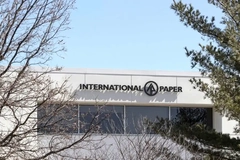Abandoning flexible plastics? Insufficient recycling infrastructure clashes with “special properties” and low costs

17 Feb 2023 --- Flexible plastics are some of the most used materials in the packaging industry, with estimates of total plastic demand accounting for around 25% of all plastics produced. However, collecting, sorting and recycling flexibles is a serious problem for industry players, governments and consumers alike.
According to the UK organization WRAP, around 290,000 tons of plastic bags and wrapping are thrown away annually in the UK. This material makes up nearly a quarter of consumer packaging, yet only 6% is recycled.
Innova Market Insights has also noted a drop in the use of “environmentally sustainable” flexible plastics in F&B launches globally, featuring an 18% year-over-year decline when comparing launches between 2020 and 2022.
Ali McNulty, market manager for Europe at ProAmpac, tells PackagingInsights that circularity for flexibles must be tackled through a number of means.
“The real challenge we face extends beyond the flexible packaging industry – it should not be considered a specific problem to one industry. A real workable solution will require cross-industry collaboration throughout the entire supply chain to move from linear thinking to a more circular economy,” she says.
 The R-2050 solution from ProAmpac is said to be widely recyclable throughout Europe. The linear reality
The R-2050 solution from ProAmpac is said to be widely recyclable throughout Europe. The linear reality
Paul Foulkes-Arellano, circularity educator at Circuthon Consulting, says it is likely that the drop in demand, also noted by Innova Market Insights, is likely due to a large shift toward pulp and paper solutions.
“We’ve seen a lot of flexible plastics players move from multi-layered solutions to monomaterial solutions in order to improve recycling rates,” he says.
“However, we don’t have the capacity or collection infrastructure. Even if we had 20 plants that could take flexibles, they would have to get the materials through the collection, which currently doesn’t exist. Major supermarkets like Sainsbury’s and Tesco are warehousing flexibles because of this.”
Using labeling terms such as “planet friendly” or “eco friendly” is now seemingly banned, Foulkes-Arellano says, because companies must back these claims up. This has driven many players toward fiber-based solutions since these materials' collection and recycling streams are superior.
McNulty also says that labeling is an important issue in improving circularity for flexible plastics. “We see brands turning to alternative materials. It is equally met with a need for consumer education on proper disposal. Available waste streams vary across different regions, so clear labeling is essential to ensure consumers are informed on what happens at the package’s end-of-life,” she says.
Circular hope?  Monomaterial solutions will make recycling for flexibles easier.McNulty says the challenges faced in circularizing flexible plastics should be addressed in a number of ways.
Monomaterial solutions will make recycling for flexibles easier.McNulty says the challenges faced in circularizing flexible plastics should be addressed in a number of ways.
“Market education is challenging because certain products render recyclable materials ineligible for waste streams or PCR materials from providing sufficient barrier properties,” she explains.
“Mechanical recycling can only process clean and dry materials. There can be no residue from the product. This residue-free requirement eliminates reasonable recycling for liquid products like soups, sauces and pet meal toppers.”
“Flexible packaging manufacturers are also working with brand owners to seek clear labeling to support consumer education efforts on proper disposal at the end of life. With clear labeling, consumers can make informed disposal decisions based on the easy-to-read labeling,” adds McNulty.
Advanced recycling is another viable option for improving circularization, she says. However, this requires the support of international governments and policymakers.
“Advanced recycling methods would minimize the reliance on monomaterial structures or delamination from other materials because the process allows for the plastic material to go back to virgin resins that can be used again.”
“Incentivizing governments to align recycling and waste legislation across different regions can also help brand owners reduce packaging changeovers and keep costs down for the end consumer,” she continues.
 Advanced recycling technologies could play an important role in circularizing the flexibles market.Monomaterial mastery
Advanced recycling technologies could play an important role in circularizing the flexibles market.Monomaterial mastery
The industry is offering more flexible packaging using monomaterials because these structures more readily fit for recycling streams, such as paper or PE, explains McNulty.
“In 2023, we anticipate more monomaterial innovation to commercialize as consumer demand still drives brands toward sustainable alternatives in various markets. The monomaterials can more readily fit the existing recycling streams to take steps toward a more circular economy.”
However, the drive toward monomaterials can’t be at the cost of product performance, she asserts.
“It’s unlikely that plastic will be replaced altogether. It’s a great material and continues to play several important roles – for example, preserving the shelf life of products like fresh-packed food.”
“There is certainly room for material science to lead innovation in the field, but there is no one solution for eliminating plastics. Additionally, as previously mentioned, driving change to allow for advanced chemical recycling methods will help reduce the levels of virgin plastics manufactured and allow for more sustainable solutions,” concludes McNulty.
Material problems, economic barriers
Given the challenges in circularizing flexible plastics and the current low levels of recycling seen globally, many industry players are looking to shift away from plastics altogether.
However, Nextek’s founder Edward Kosior, who started the Nextloopp initiative, which aims to raise recycling rates for PP, says abandoning flexible plastics altogether is neither economically nor materially viable.
“This [abandoning] is highly unlikely due to the simplicity and low cost of flexible plastics in delivering a wide spectrum of properties to provide safe packaging for many food products,” Kosior says.
“Bio-based equivalents (LLDPE and PP mainly) will be made, but these face the same challenges as the fossil fuel films but at much higher costs. Biodegradable films will typically not be able to match the special properties required for many food applications.”
Plastic paper blends are emerging but the mixture is not recyclable either, he continues.
In 2023, Kosior says he expects new innovations will emerge with improved film sorting to create higher recovery rates
“High-performance cleaning steps are being introduced to remove contamination and create food-grade markets and de-inking technology is emerging as an extension to existing recycling lines.”
“More films will become monolayer or compatible layer films and the use of difficult-to-recycle barrier resins will diminish,” he concludes.
By Louis Gore-Langton











